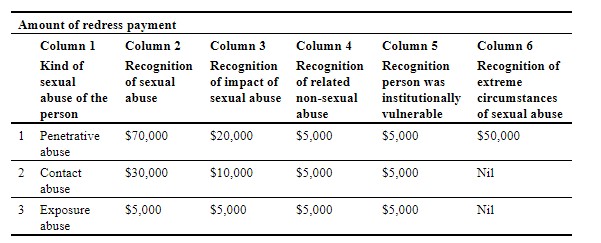It may be surprising to some, but prior to the commencement of the National Redress Scheme, there were some 80 different Inquiries into Child Welfare Institutions in Australia over the past 160 years.
However, a survivor of abuse had limited opportunity to seek recognition and acknowledgement of the wrongs done to them in the past. Many significant barriers remained in place until the Royal Commission into Institutional Responses to Child Sexual Abuse (RC) delivered its ground breaking findings. A number of recommendations have been handed down by the RC and they have been taken up by the various states and territories in Australia.
Today, a survivor has a number of different options with respect to their rights raising from institutional abuse. One such option is the National Redress Scheme (NRS).
Q: Can you give me a brief overview of the NRS?
The NRS commenced on 1 July 2018 and NRS applications can be made at any time prior to 30 June 2027.
You may apply to the NRS if:
- you experienced sexual abuse when you were a child (under 18 years of age), and
- the abuse happened before 1 July 2018, and
- an institution was responsible for bringing you into contact with the person who abused you, and
- you were born before 30 June 2010, and
- at the time you apply, you are an Australian citizen or a permanent resident.
The NRS is a simplified process which has at its heart, a three step process.
- A survivor must complete and submit an NRS application.
- An Independent Decision Maker will review the NRS application and render a decision in consultation with the participating institution and the Abuse Matrix. There may be an Offer of Redress made to the survivor.
- The survivor may accept, reject, or seek a review of the offer of redress
Special time limits apply with respect to the NRS process once it is set in motion.
Q: What is the Abuse Matrix under the NRS?
Section 3 of the National Redress Scheme Act states that its objective is to recognise and alleviate the impact of past institutional child sexual abuse and related abuse and to provide justice for the survivors of that abuse.
The centrepiece of the NRS is the Abuse Matrix that is used to calculate the amount of a survivor’s Redress Offer and the devil is in the detail.
While the maximum payable to the survivor is $150,000, this is only payable to those who satisfy all the necessary conditions of Row 1 of the Abuse Matrix.

https://www.legislation.gov.au/Details/F2018L00969
Many survivors of abuse have spent decades dealing with the fallout from what they have suffered. A survivor is encouraged to provide statements about the impact of the sexual abuse upon the course of his/her life within Part 3 of an NRS application. It is noteworthy that Column 3 of the Abuse Matrix provides significant restriction on the amounts paid to survivors and a Column 6 payment for recognition of extreme circumstances of sexual abuse is only available for those who have suffered penetrative abuse.
Unsurprisingly, the Abuse Matrix has been the source of much criticism since it has been introduced. But after nearly 2 years after the NRS was introduced, there is no indication that this Abuse Matrix will be changed.
Q: What happens if I speak to a lawyer about my options?
A lawyer will speak to you about a number of things, including how the abuse has affected your health, studies, personal relationships and work. He/she we will also discuss what your options are moving forward.
Q: What should I do if I have received compensation previously?
In many instances, it may be better to proceed directly with an NRS application. However, each person’s individual circumstances vary and so our recommendation is that you contact our office for a free case assessment.
Q: What if I find it hard to speak about the abuse(s) I have suffered?
Lawyers who specialise in institutional abuse law are trauma informed and will speak to you in a careful, sensitive manner. They may also refer you to various support services which will assist you in your journey.
Additional Resources
| Service Name | Number | Website |
| Knowmore | 1800 605 762 | https://knowmore.org.au/ |
| Bravehearts | 1800 272 831 | https://www.bravehearts.org.au/ |
| 1800 RESPECT | 1800 737 732 | https://www.1800respect.org.au/ |
| blue knot foundation | 1300 657 380 | https://www.blueknot.org.au/ |
| beyondblue | 1300 224 636 | https://www.beyondblue.org.au/ |
| Care Leavers Australia Network | 1800 008 774 | https://www.clan.org.au/ |
| Child Migrants Trust | 1800 040 509 | https://www.childmigrantstrust.com/ |
| CREATE Foundation | 1800 655 105 | https://create.org.au |
| Find and Connect | 1800 161 109 | https://www.findandconnect.gov.au/ |
| headspace | Website, and drop in centres only | https://www.headspace.org.au/ |
| Lifeline | 13 11 14 | https://www.lifeline.org.au/ |
| Relationships Australia | 1800 025 441 | http://www.relationships.org.au/ |
| Suicide Call Back Centre | 1300 659 467 | https://www.suicidecallbackservice.org.au/ |